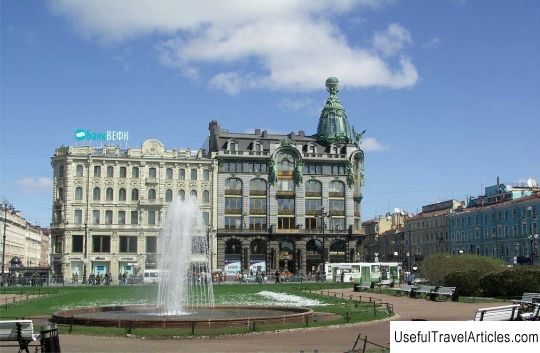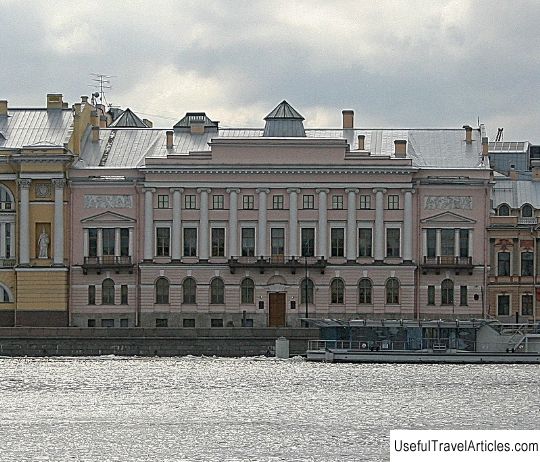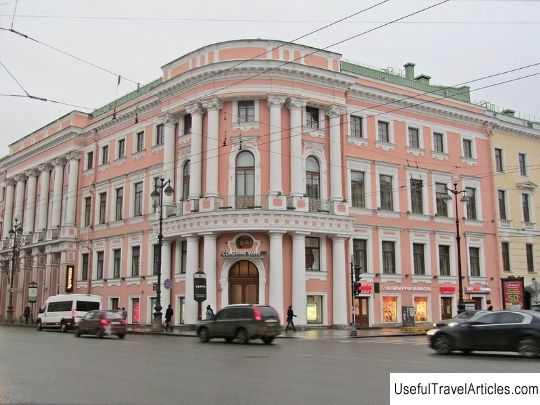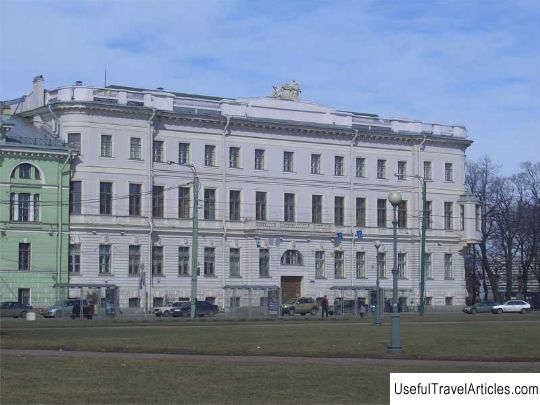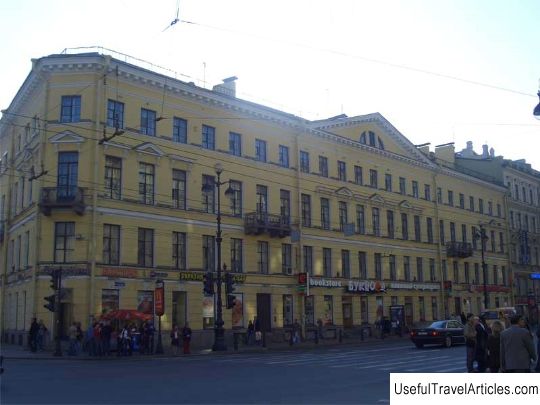Saltykov House description and photo - Russia - Saint Petersburg: Saint Petersburg
Rating: 8,2/10 (704 votes) 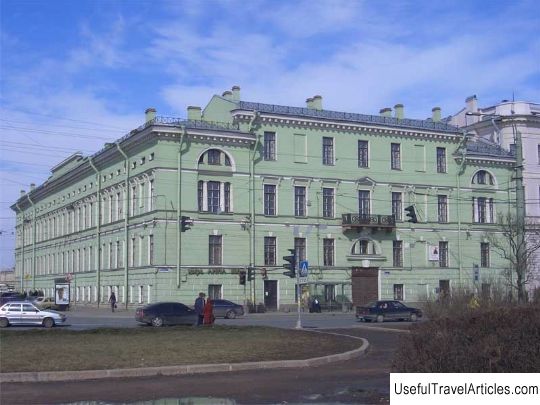
Saltykov's house description and photos - Russia - St. Petersburg: St. Petersburg. Detailed information about the attraction. Description, photos and a map showing the nearest significant objects. Photo and descriptionThe Saltykov House (nowadays - the University of Culture) is located on the Palace Embankment of St. Petersburg at number 4 - an object of cultural heritage of the Russian Federation, an architectural monument protected by the state. The building was built in 1788 by the architect Quarenghi. Almost immediately after the construction, the Saltykov House was repeatedly rebuilt and reconstructed. Famous architects Rossi, Lorentzen, Bosse were invited to work on the interior decoration at different times. The plot of land on which the Saltykov House is now located was allocated for the arrangement of the State Secretary of Empress Catherine II P.A. Soymonov, who refused it for various reasons. The land passed to the merchant F.I. Grotenu, who invited the architect Quarnegi, for him to design and build a mansion for him. Construction work began in 1784 and was completed in 1788. In 1796, the house and the adjacent land were acquired by Empress Catherine II as gift for Field Marshal Nikolai Ivanovich Saltykov, who was the tutor of the Grand Dukes Paul (Paul I), Alexander (Alexander I) and his brother Constantine, headed the Military Collegium until 1802, and from 1812 to 1816 he was the chairman of the State Council and the Committee of Ministers . Until 1818, a garden was adjacent to the Saltykov House. In its place, according to the project of K. Rossi, Suvorovskaya Square was laid out. In parallel, the facade overlooking it was changed, a large porch was built. The Saltykov family owned the mansion until the October Revolution, but the owners themselves did not live in it, but rented it out. For almost a century, the House of Saltykovs hosted foreign embassies: from 1829 to 1855 - the Austrian embassy, headed by Count K.L. Fickelmon, at about the same time the 3rd and 4th floors belonged to the Danish Embassy and its head, Baron O. Plessen, from 1863 to 1918 the British Embassy was located in the building. Until 1818, the Saltykov House had a home church Resurrection of Christ. In September 1797, it was consecrated by Archpriest Pavel Ozeretskovsky. However, it was relocated due to another reconstruction. Then she was returned to the house and was consecrated again in April 1823. In 1828 the church was finally closed. Quite a few elements of the original interior of the Saltykov House have survived to this day: the White Hall, the main staircase, the lobby - although the descendants of Field Marshal Saltykov have reconstructed the house many times. For example, in 1843-1844 the mansion was rebuilt according to the project of Beausset, the White Hall was repaired, in 1881 - Lorenzen expanded the building towards Millionnaya Street. Almost in its original form, the facade facing the Palace Embankment has reached us. After the revolution in 1925, the Saltykovs House housed the N.K. Krupskaya, since 1941 - the Library Institute, later - the Institute of Culture and the Academy of Culture, which is now called the University of Culture and Art.         We also recommend reading Annunciation Church description and photos - Russia - Saint Petersburg: Saint Petersburg Topic: Saltykov House description and photo - Russia - Saint Petersburg: Saint Petersburg. |
